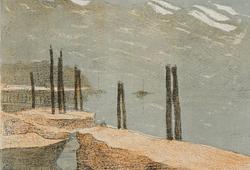Bukowskis presents two important works by Gustaf Fjaestad
Gustaf Fjaestad - Nature Poetry and Symbolism
Gustaf Fjaestad was one of the most prominent Swedish artists of his generation. Prior to him, the generation of the so-called 'opponents' had laid the foundation for a new art movement in Sweden. They criticized the prevailing art views in Sweden, which were dominated by the outdated ideals of the Art Academy, and advocated for the new plein-air painting that had emerged in France. The opponents imported French plein-air painting to Sweden, changing domestic art fundamentals. In 1886, they founded the Artists' Association, which had a revolutionary purpose: "to counteract all anachronisms that may harm and promote all reforms that may be considered beneficial to our domestic art and art industry."
Gustaf Fjaestad, in many ways, carried forward the artistic advancements of the opponents. Bruno Liljefors, a prominent opponent, became Fjaestad's primary mentor in the 1890s. They met one day in Uppsala and became close friends. In 1893, Liljefors hired him as an assistant for the landscape panorama at the Biological Museum in Stockholm. Three years later, another prominent opponent sought his help; Carl Larsson was working on the murals in the National Museum's staircase. Thus, Fjaestad was involved in the two largest art projects of the 1890s in terms of size and ambition.
In 1897, he visited the forests of Värmland for the first time on a skiing trip and fell in love with the place. At that time, Bröderna Erikssons Möbelverkstad outside Arvika in Värmland had gained fame for its production during the 1890s. When Fjaestad married Maja Hallén in the summer of 1898, one of the Eriksson brothers, Christian Eriksson, had settled in Stockholm. He offered the newly married couple to move into his newly built studio, Oppstuhage, on the family's estate on the northern outskirts of Taserud in Arvika.
Gustaf and Maja moved in with the Erikssons but later built their own home, Kampudden, by Rackensjön. Over the following years, friends and acquaintances of the Fjaestad couple settled near Rackensjön, and an artist colony emerged that we now call the Rackstadkolonin. The painting among the Rackensjön artists was defined by atmospheric landscape painting. They were interested in theosophy, among other things, and their images were often symbolic. The visual language was influenced by japonism, a cultural movement that emerged in Europe during the late 19th century. For Gustaf, the forests of Värmland became a lifelong project. The works "Spår i snön" and "Gryningsmorgon”, presented at the upcoming Important Winter Sale auction, are two excellent examples of this.
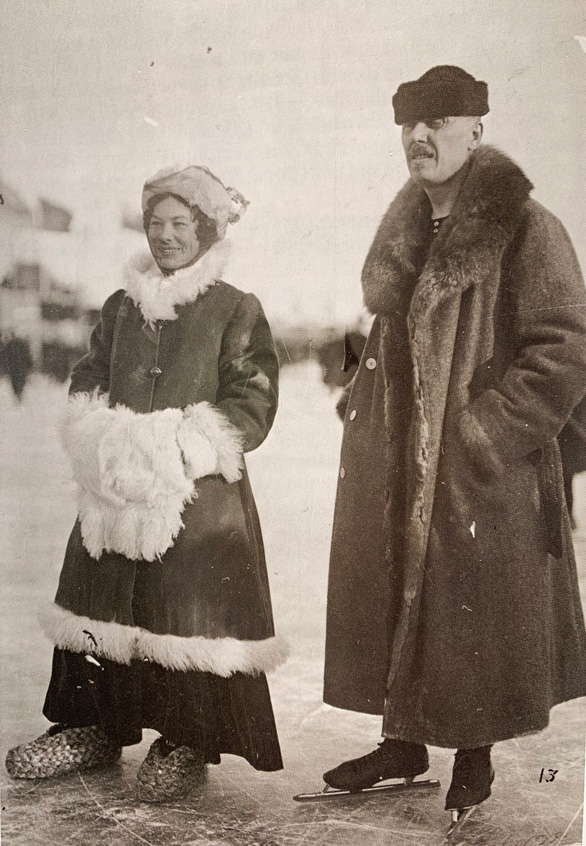
Gustaf and Maja Fjaestad. Photo: Rackstadmuseet
"Spår i snön"
In the auctions painting, we see what Gustaf Fjaestad became most famous for, earning him the epithet "Master of Rimfrost," namely the Värmland winter landscape. In this painting, we can see traces in the deep snow leading the viewer's gaze into the dark forest. One of Fjaestad's biographers, Agneta Fjaestad Nordmark, speaks of "an intimacy," "as if this place were one's 'own' private spot." It's easy to agree with the statement when looking at the painting. Somewhere at the intersection of nature lyricism and symbolism, the Värmland forest motifs are depicted with artistic clarity and richness of detail.
Gustaf Fjaestad, in many ways, nurtured the artistic progress of his contemporaries. Bruno Liljefors, who was a prominent contemporary, became Fjaestad's foremost mentor in the 1890s. They met one day in Uppsala and became close friends. In 1893, Liljefors hired him as an assistant in the creation of the landscape panorama at the Biologiska Museet in Stockholm. Three years later, another prominent contemporary, Carl Larsson, sought his assistance for the mural work in the Nationalmuseum's stairwell. Thus, Fjaestad was involved in two of the biggest art projects of the 1890s.
To be sold at Important Winter Sale
Estimate 400 000 - 600 000 SEK
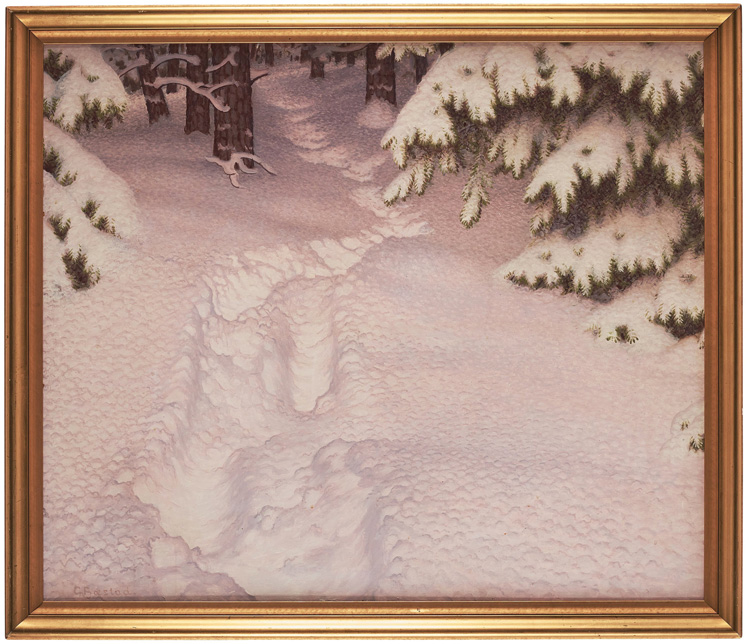
"Gryningsmorgon"
It was his winter paintings that brought Gustaf Fjaestad fame, but at the same time, it's evident that he was a very versatile artist. The first curator of the Rackstadsmuseet, Per Inge Fridlund, goes so far as to call him versatile, "almost like a Renaissance painter." We see evidence of this in the current painting at the auction. During the summer, Fjaestad used a rowboat he had built himself to explore various aspects of the Värmland landscape on Rackensjön. Fjaestad's wife, Maja, wrote to her mother about it:
"It was a celebration, I must say, when Gustaf got the boat ready; then he went out for a test sail, and we walked around the point, following it with our eyes; it looked great on the lake. The next day, he sailed over to Ahlgrenssons and brought them here, and in the afternoon, we all rowed out to a little island called 'Kampöla' and had punch and indulged in lingonberries left over from last year. It's a splendid oak boat and can hold a great many."
"Gryningsmorgon" was exhibited at the Panama Pacific International Exhibition in San Francisco in 1915.
To be sold at Important Winter Sale
Estimate 400 000 - 500 000 SEK
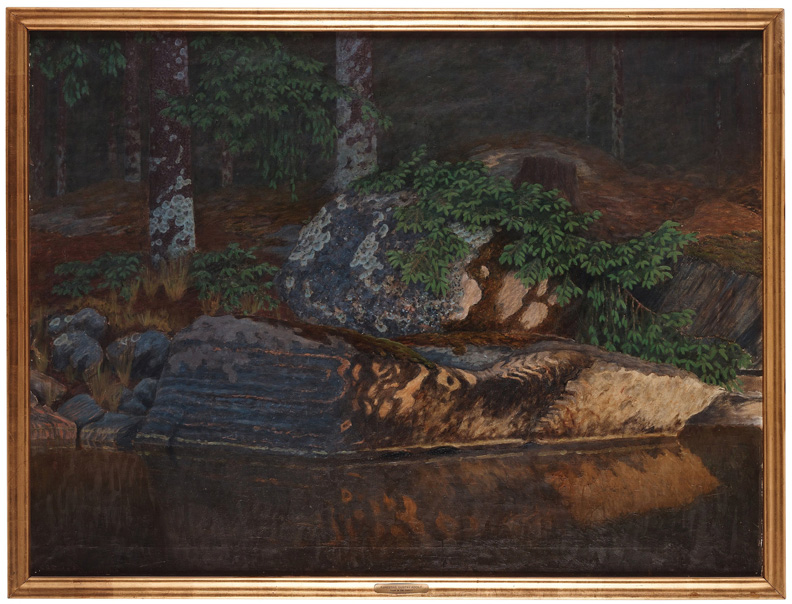
Gustaf Fjaestad and The Panama-Pacific International Exposition in San Francisco
The Panama-Pacific International Exposition in San Francisco, USA, in 1915 (known as "The Panama-Pacific International Exposition") took place between February and December of that year. The purpose of the exhibition was to celebrate the completion of the Panama Canal, which had opened in 1914. The event also served as an opportunity for the city to showcase its recovery following the great earthquake of 1906. Gustaf Fjaestad was one of the Swedish artists in the exhibition, and among the artworks displayed was the current painting "Gryningsmorgon".
The committee for Swedish participation in the exhibition was established on July 18, 1913, with Crown Prince Gustaf (VI) Adolf as its chairman. Architect Ferdinand Boberg was responsible for the design of the Swedish pavilion. Richard Bernström was appointed as the general commissioner, and the Swedish artist Anshelm Schultzberg (1862-1945) was appointed as the commissioner for Swedish art. Schultzberg, after his successful roles as commissioner at the 1904 World's Fair in St. Louis and in Rome in 1911, was considered the natural ambassador for Swedish art on an international level.
However, Bernström and Schultzberg faced an almost insurmountable challenge. While the Swedish pavilion was being constructed during the summer and fall of 1914, the First World War broke out in Europe. Transporting the extensive and costly exhibition items through submarine-infested and mined seas seemed like an impossible task. Shipping and insurance costs had soared due to the war, necessitating budget cuts. By late summer 1914, it appeared that the exhibition of Swedish art at the World's Fair might not happen. However, at the last moment, the Swedish Foreign Minister Knut Wallenberg, recently appointed an honorary member of the Royal Swedish Academy of Fine Arts, intervened and saved the Swedish exhibition by making a personal contribution of 50 000 kronor to cover the increased shipping and insurance costs.

In December 1914, Schultzberg arrived in New York with two shiploads from Sweden. The risky crossing, which had gone through Norway, had taken two weeks. The exhibition objects were loaded onto railway cars, and the transportation continued by train across the American continent to San Francisco. Only the art amounted to over 400 items, of which 26 paintings were executed by Fjaestad. In the newly constructed Palace of Fine Arts, which still stands today, Swedish art had been allocated nine rooms. Carl Larsson, Bruno Liljefors, and Gustaf Fjaestad were represented in their own respective rooms. In the first, "The Fjaestad room," paintings, sculptures, fabrics, and a group of Fjaestad's national romantic carved "stabbe furniture" were exhibited. Throughout the Swedish section in the Palace of Fine Arts, there was a strong presence of nature interpreted by a broad spectrum of artists. The exhibition was a success, and a large number of awards were given to the Swedish works. Bukowskis has previously sold items by Gustaf Fjaestad from this historic exhibition, including "The First Snow" dated 1913, and it is with pleasure that we now present "Dawn Morning" from 1904, an almost magical depiction of a forest glade with moss-covered stones by water.
Important Winter Sale
Viewing November 30th – December 5th, Berzelii Park 1, Stockholm
Open weekdays 11 am – 6 pm, weekends 11 am – 4 pm
Live AuctionDecember 6th – 8th, Arsenalsgatan 2, Stockholm
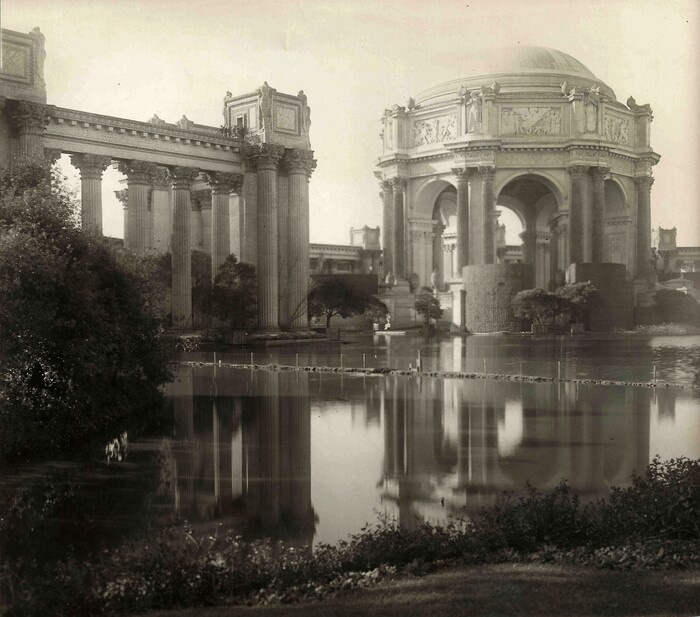
Requests & condition reports Contact specialist
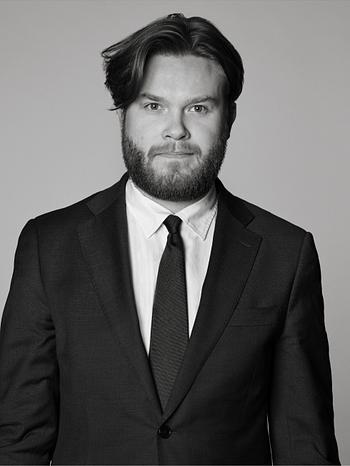
Stockholm
Rasmus Sjöbeck
Assistant Specialist Classic Art, Old Masters
+46 (0)727 33 24 02







